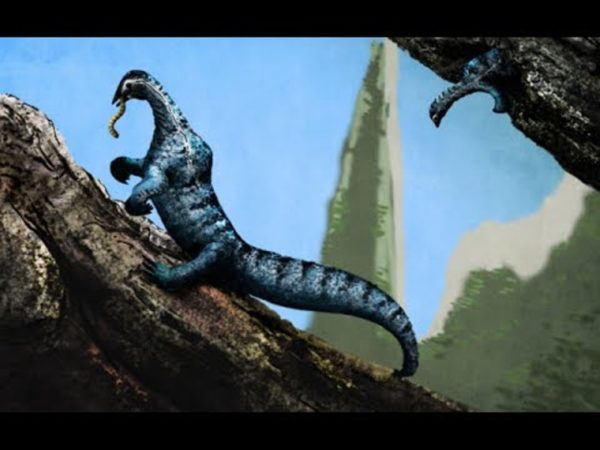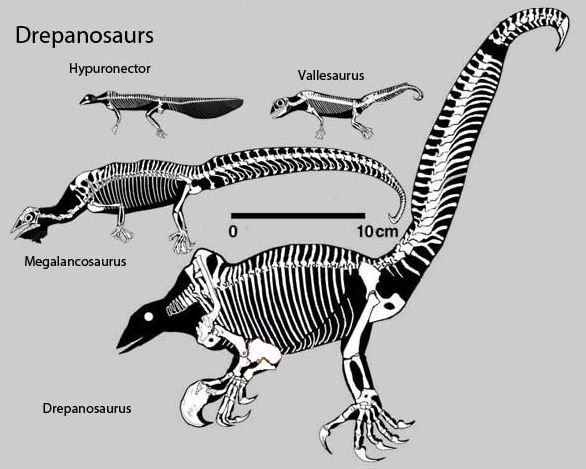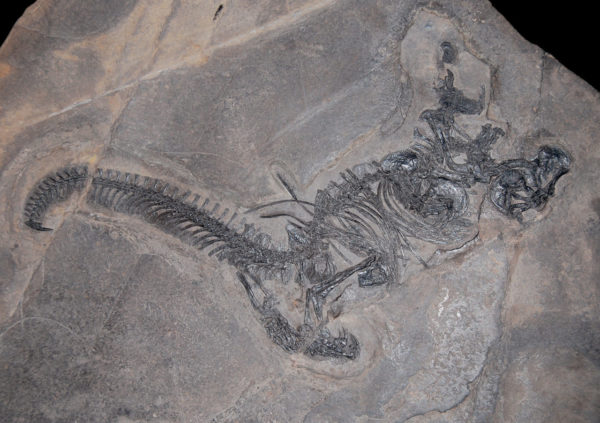
Palaeontologies in the United States have made a stunning discovery on an extinct reptile known as Drepanosaurus, revealing that it had huge hooked claws to dig insects from bark, much like today’s anteaters in the forests of Central and South America.
Palaeontology is the study of fossils to determine the structure and evolution of extinct animals and plants, and the age and conditions of deposition of the rock strata in which they are found. This new discovery was made based on fossil evidence.
According to researchers, Drepanosaurus was an insectivore, and lived in a coastal environment in what is now modern day Italy, as well as in a streamside environment in the mid-western United States. Researchers said their findings show that the creature defies the convention on how reptiles evolved and flourished.
Currently, the 200-million-year-old reptile is rewriting the rulebooks on how four-legged animals conquered the world. The researchers have published their findings in the journal Current Biology.
New fossils of Drepanosaurus were reportedly found in a New Mexico quarry, United States. The fossils suggest that Drepanosaurus was the size of a cat and lived in the trees. It had a bird-like head on a chameleon-like body, but the most unusual feature was its forearms.
“Drepanosaurus itself has extremely massive arms and forearms – very muscular. The index finger is much much larger than any of the other fingers and supports this gigantic claw, which is easily the most massive bone of the entire arm,” lead author of the study, Dr Adam Pritchard of Yale University elaborated on the features of the reptile.
What baffled the researchers on the evidence gathered, is that the reptile had some missing features in a class it belongs to. Drepanosaurus is classified as a Tetrapod. The forelimbs of tetrapods are known for their versatility, used to walk, dig, fly or swim.
Dr Pritchard and his team made 3D reconstructions of the reptile, based on micro-CT (computerized tomography) scans of dozens of bones.
“The arm of tetrapod animals almost always follows some very consistent rules. In your forearm, in the forearm of Tyrannosaurus rex, in the forearm of an elephant, you have two bones – the radius and the ulna, which manifest as these elongate, slender, parallel shafts,” Dr Pritchard explained.
The simple and short of the story is that Drepanosaurus did not have these parallel bones that Dr Pritchard explained.
Dr Pritchard admitted their findings are mindboggling. He said:”So all of these consistent patterns that we see across a huge range of tetrapods, regardless of their ecology, regardless of their ancestry, are violated by this animal.”
It is said Drepanosaurus disappeared at the end of the Triassic age and did not lend its form to any future creatures. The Triassic is a geologic period and system which spans 50.9 million years from the end of the Permian Period 252.17 million years ago.
The researchers said they are continuing to excavate the quarries in New Mexico, with the hope of finding more discoveries. It is believed that there is a lot fossil records, especially that of smaller animals in the quarries in New Mexico.
You want to support Anonymous Independent & Investigative News? Please, follow us on Twitter: Follow @AnonymousNewsHQ
This article (New Fossil Evidence of a 200-million-year-old Reptile Baffles Researchers) is a free and open source. You have permission to republish this article under a Creative Commons license with attribution to the author and AnonHQ.com.







